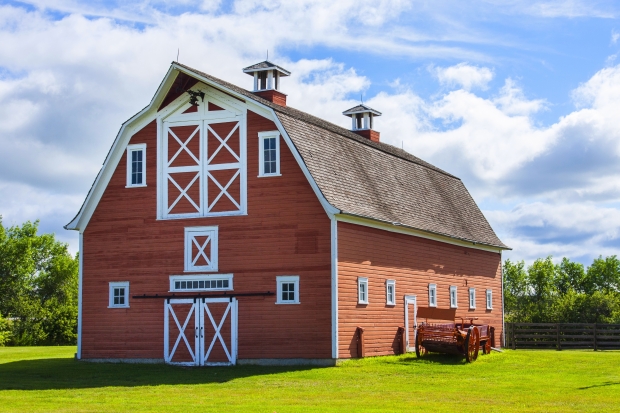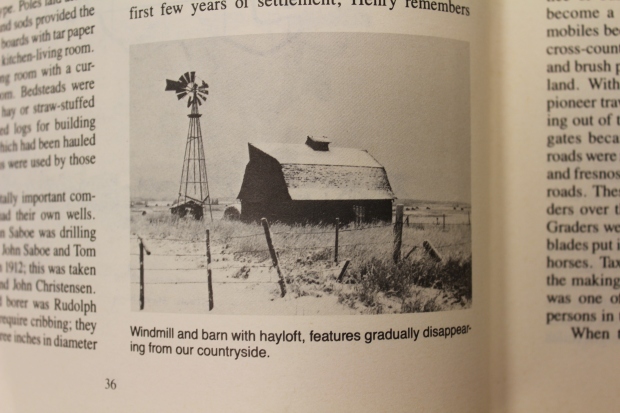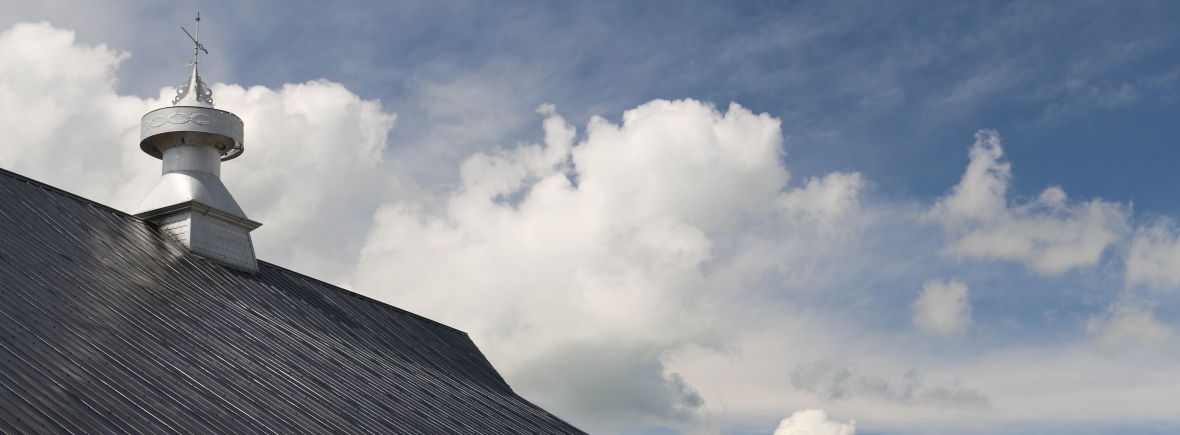What is Heritage?
Heritage is perceived and, as such, is different for everyone. Heritage is based on the relative value that individuals place on different aspects of the past. In our lives, heritage can be embodied by memories, written histories, and/or physical objects, like clothes, tools, and structures.
Heritage is sometimes linked to inheritance of these physical objects and cognitive thoughts. The inheritance of objects and ideas gives living members of a society a vested interest in heritage. This is because heritage gives present-day individuals the opportunity to understand the lifestyles and life histories of those who lived in the past.

Display of the classic prairie barn.
What is “Heritage Barns of Flagstaff”?
A barn’s physical structure and the life experiences of those who used the barn inform our curious minds. A generation or two has passed since most Albertans used barns in their daily lives. As such, many Albertans do not understand the terminology, machinery, and structure associated with barns. Opportunities to access this history are being lost as barns get neglected or destroyed out of necessity. Additionally, up until now there has been very little online documentation on Alberta’s barns and those who lived there. As a result of these compounding factors, our society runs the risk of loosing most of this knowledge forever.
Flagstaff County is home to an abundance of barns that showcase the region’s rich history. The barns tell the story of both past and present use and give opportunities for revival and for future use. To make learning about and accessing this heritage easier, Flagstaff County is taking an inventory of the barns present within their municipal district. The project aims to increase understanding and appreciation of rural agricultural histories through the documentation of heritage barns. The information is available to the public on this website so that anyone who wishes can enjoy the barns within the municipal district of Flagstaff County.
How Did “Heritage Barns of Flagstaff Begin”?
The “Heritage Barns of Flagstaff” project began as a partnership between Flagstaff County and Sydney Hampshire, a Peter Lougheed Leadership College scholar. The Peter Lougheed Leadership College is an interdisciplinary leadership program at the University of Alberta. The program aims to create leaders who can guide positive change in the world through their commitment to “uplifting the whole people” (the University of Alberta’s Promise). One of the college’s first students was Sydney Hampshire of Killam, Alberta. Hampshire approached Flagstaff County in 2015 for an opportunity to learn about leadership in rural Alberta as part of her “Stretch Experience”, a 200-hour leadership practicum and part of the College’s programming. She secured a position with them and her Stretch Experience became the “Heritage Barns of Flagstaff” project. Now well into its third summer of operation, over sixty barns within the Flagstaff Region have been documented through the project’s online database.
“Heritage Barns of Flagstaff: Volume I” Coffee Table Book
In August of 2017, “Heritage Barns of Flagstaff: Volume I”, a full-colour hard-cover book, was published and features nearly two dozen barns from the online database. On June 1st, 2018, a book launch was held in Edmonton at Peter Lougheed Hall on the University of Alberta campus in partnership with the Peter Lougheed Leadership College. This book launch helped bring “Heritage Barns of Flagstaff” to members of the University of Alberta, City of Edmonton, and Province of Alberta.
Future Heritage Prospects in the Flagstaff Region
It is our hope that attention will be brought to heritage conservation and the Flagstaff Region’s rich history. Cultural heritage is not just part of our past, it helps us design our future. As such, we must not wait until scarcity elicits demand for these historic resources.
Documentation of heritage in the Flagstaff Region is still ongoing. If you know of a barn in Flagstaff that hasn’t already been documented please call the Flagstaff County office at 780-384-4100. Additionally, if you know of a landform, church, or any structure with historical significance within the Flagstaff Region, let us know!
To get started, check out the Barn Database.
Additionally, please click on the Architecture menu tab for information on barn roof shapes and features.

“Homesteads and Centers of Activity.” Yesterday and Years Ago. 1st ed. Forestburg: Forestburg and District Historical Book Committee, 1983. Print.



What a great idea. I had a large barn like the one you picture with the door to open to allow slings of hay into the loft. Built probably in the late 1910’s it housed the 30 some of horses used to work the land and had piped in water from the nearby dug well. There was a double row of Stanchions for milk cows, a CREAM separator room and an adjoining addition for grain and an
Eaton grinder. I was told that early on (a couple of decades before we got there) the loft was also used for local dances. The barn stood about 1/4 km off the historic Calgary/Edmonton trail so would have been a recognizable sight for early travellers, even in the late ’40’s saw the yearly travels of First Nation people from West of Calgary up to Hobbema near Edmonton.
We failed to repair the vast roof of shingles and about 15 yrs ago called in the local wrecker to dig a hole in the yard and dump/burn the sad remains, by then we had long gone out of cattle/horses with Dads retirement.
I felt that this old structure would have had interest to area farml residents so called the local Innisfail Province to come and take pictures BUT my calls were totally ignored in line with what you say about apparent current day interest in such history. Now such barns are few and certainly far between and your book will be welcomed for sure by those interested, current AND FUTURE!
N. Hussar, PhD
Bsc Ag. Class of ’56, U of A.
LikeLiked by 1 person
Wonderful!
LikeLike